One of the most underrated mushrooms, the Dryad’s saddle (Cerioporus squamosus, formerly known as Polyporus squamosus) is an edible mushroom with a pattern on the top of the cap that resembles pheasant feathers, hence the common name pheasant back. Pheasant tail mushrooms and saddle mushroom are two other common names.

Some people don’t care for the taste, but these mushrooms make a good consolation prize when morels are scarce. And, although they’re not worth as much as morels they’re often sold to restaurants. The market price of pheasant backs is $10-20 / lb depending on quality.
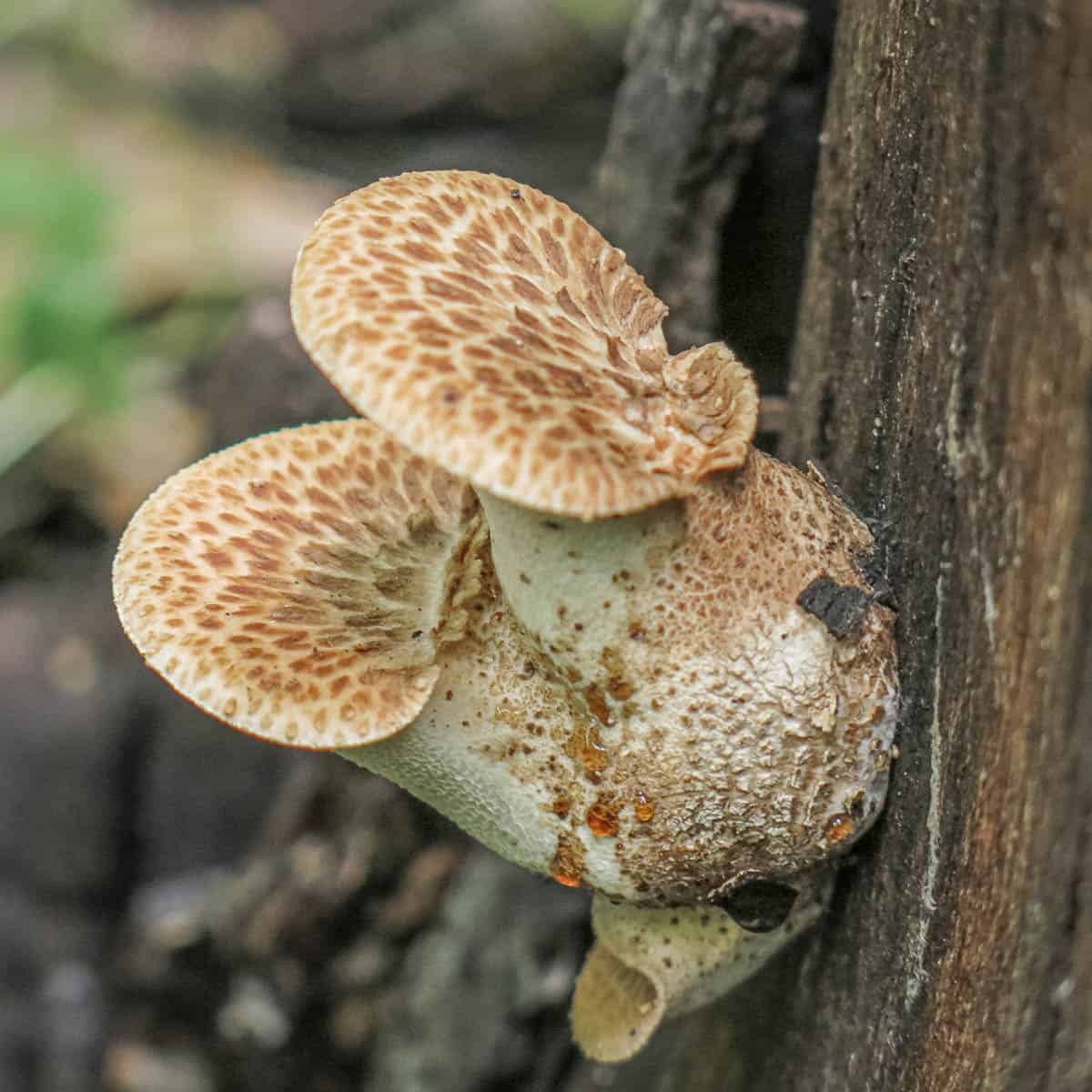
Very young dryad saddles showing the speckled, feather-like pattern on the cap.
Pheasant Back Mushroom Identification
Identifying a pheasant back mushroom is easy. These are polypore mushrooms like chicken of the woods and hen of the woods, with honeycomb-shaped pores under the cap instead of gills.

The cap is covered in thin, brown scales. They can grow to be quite large, and caps 12 inches across are common. Very young mushrooms will resemble wine corks.
Below: Very young pheasant mushroom buttons on an elm tree.

Pheasant Back Mushroom Look Alikes
The most common look alike is the Train-Wrecker (Neolentinus lepideus), but some people mention hawks wing mushrooms (Sarcodon imbricatus) as well. Both look alikes are edible, but not as good as C. squamosus.
Below: Train wrecker cap, and train wrecker gills.


Below: Hawks wing mushrooms or Sarcodon imbricatus.

What do Pheasant Back Mushrooms Taste Like?
Some say dryad saddle mushrooms smell and taste like fresh cucumber, some say watermelon rind. The aroma of the dryad saddle, along with other mushrooms like Clitopilus prunulus, is known as “farinaceous” referring to an odor of grain. I don’t understand the reference, but it’s useful if you run across it in a field guide or mushroom book.
Below: Note the black stem, which may or may not be present.
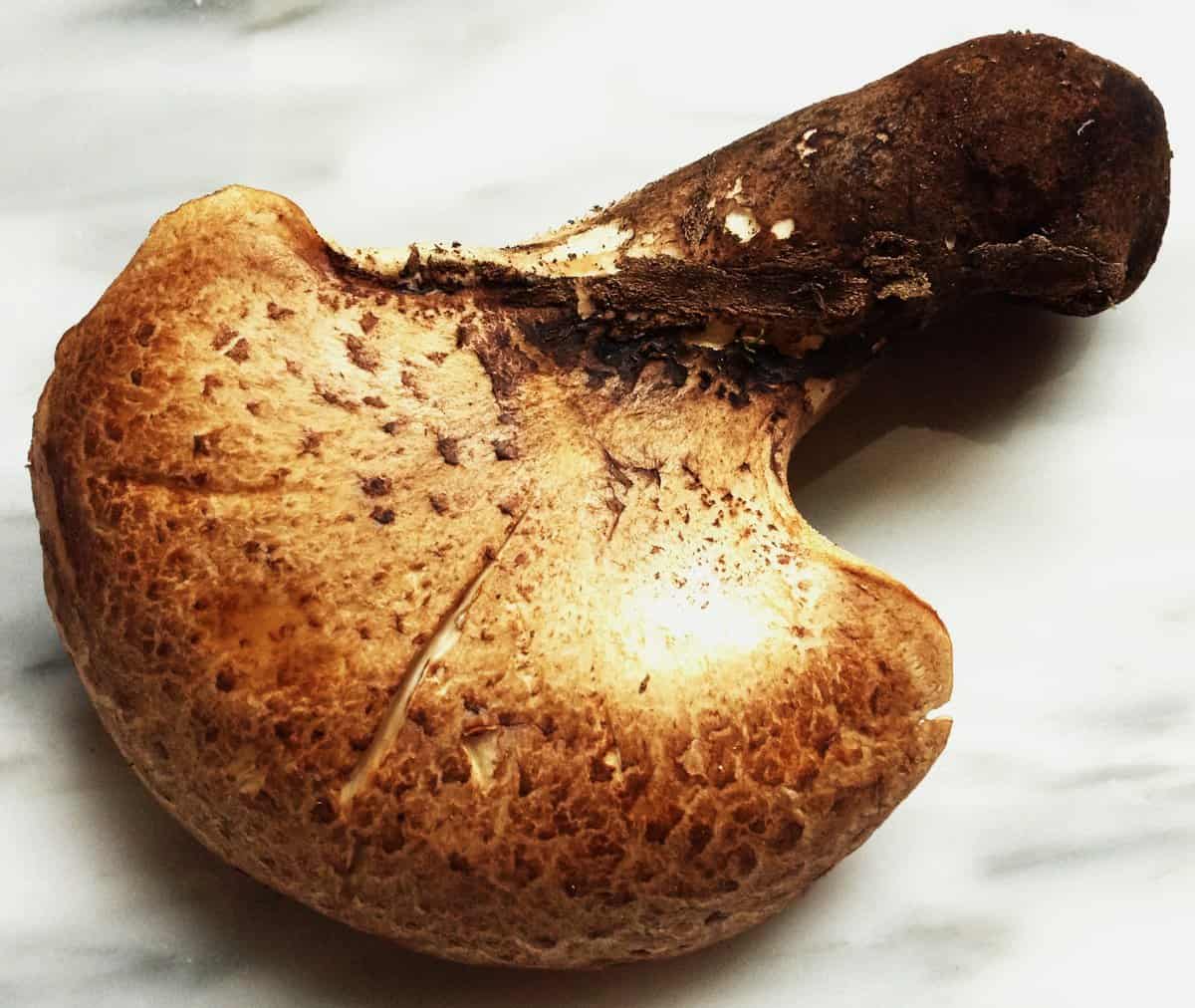
Where to Find Pheasant Back Mushrooms
These are one of the most common wild Spring mushrooms, appearing in April or early May before morels. They’re only found east of the Rockies.
Below: Pheasant mushrooms on an elm tree.
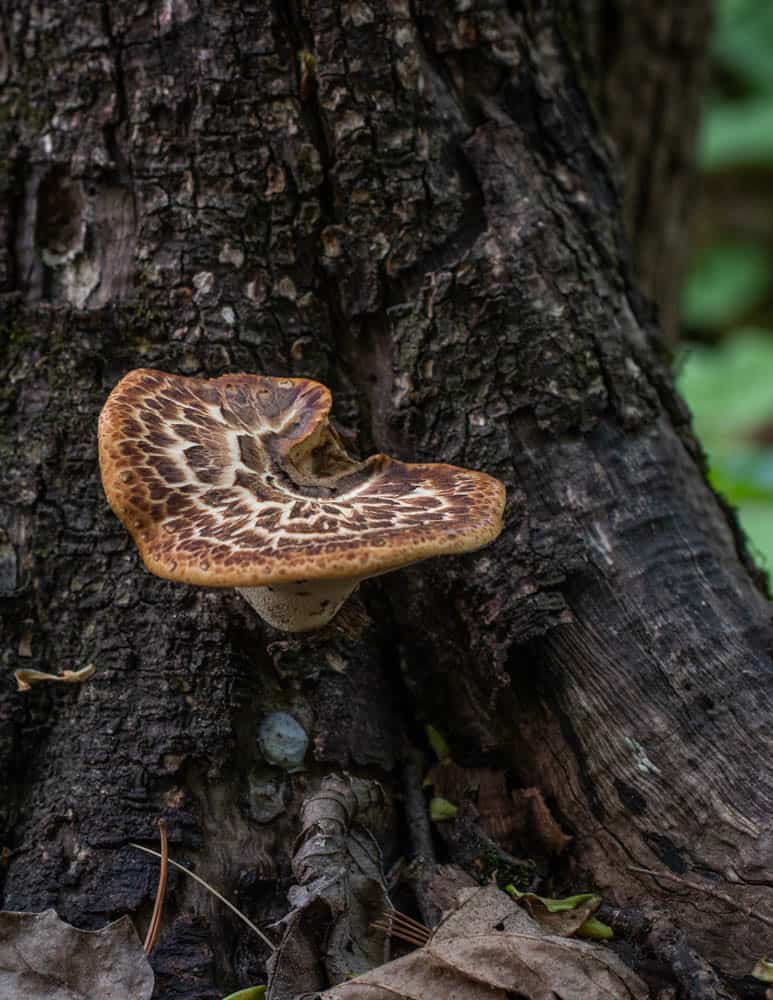
These are a parasite of dead and dying trees, causing a white rot like other polypores. They grow on decaying logs, stumps, injured and dead hardwood trees. In Minnesota and Wisconsin, I usually find the mushrooms growing on box elder trees and elm trees.
Below: Spring box elder leaves.

Below: spring elm leaves.

Look in deciduous hardwood forests for these in the spring after heavy rains. They’ll continue to fruit throughout the year, but it’s more difficult to get them young and tender after Spring when they fruit the heaviest.

Harvesting Pheasant Back Mushrooms
Cut the mushrooms from the tree with a sturdy mushroom knife. You can discard the woody stem or trim them later. The mushrooms are usually very clean, but can be rinsed with cool water if necessary.
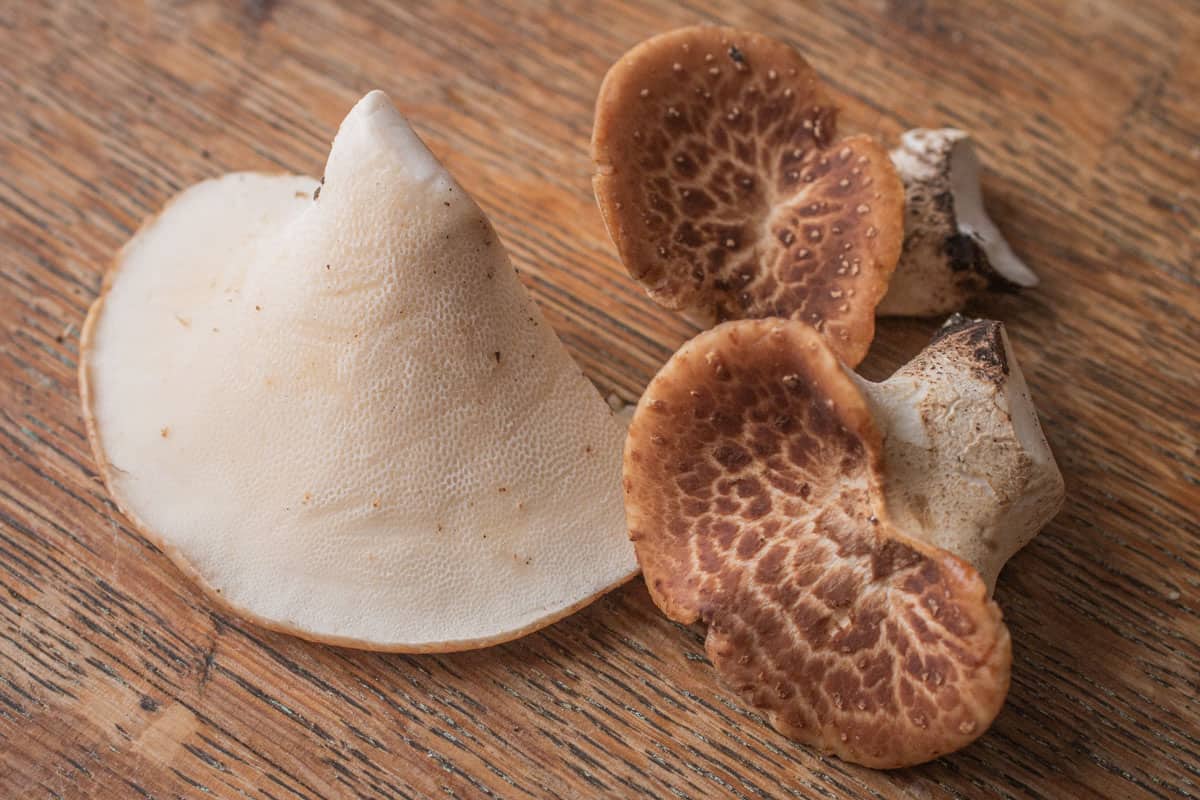
Store fresh pheasant backs in a large zip-top bag in the refrigerator with a paper towel to absorb moisture. They’ll last for a week.
The most important thing is finding young mushrooms as older mushrooms are too tough to eat. They should have a deep brown color and markings. Avoid mushrooms that look white or cream which are old and tough.
Below: The pheasant’s back mushroom on the left are too old, perfect ones for eating are on the right.

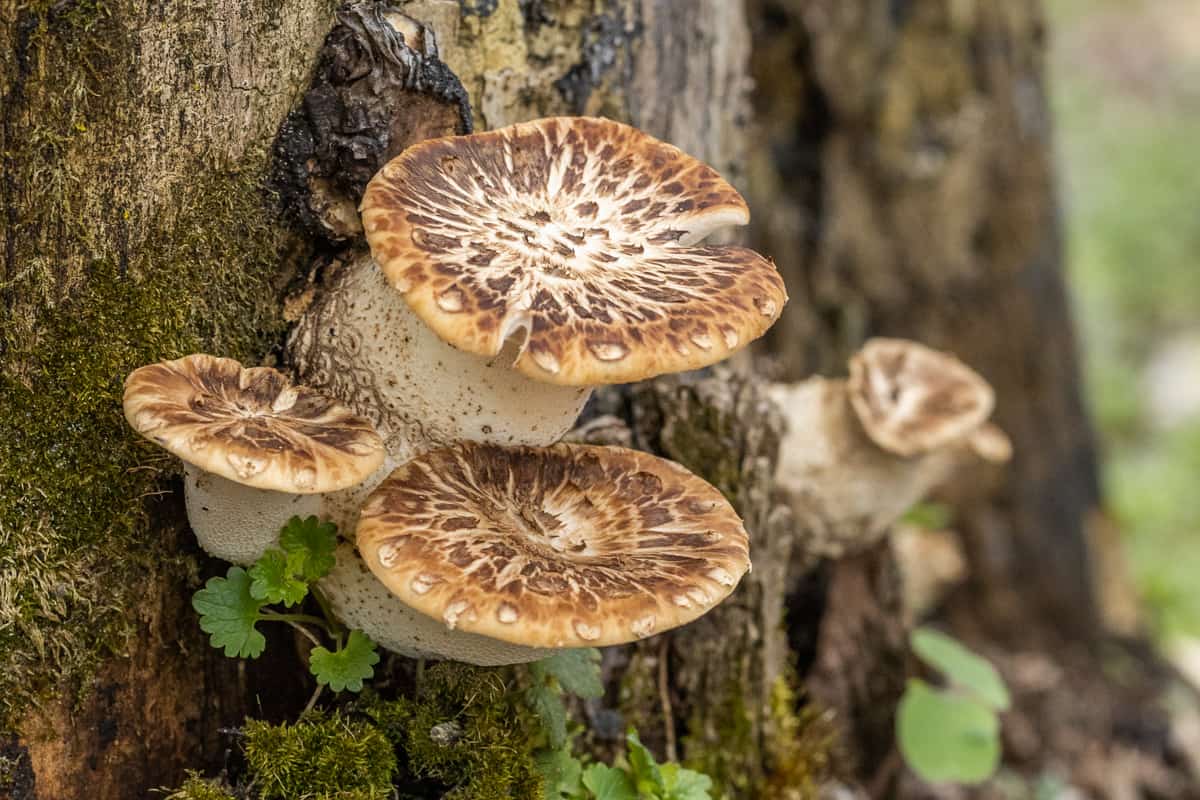
Knowing when the mushrooms are at the best stage to eat is confusing as the mushrooms grow very fast, and the pores on the underside of the mushroom change as they mature.
The young mushrooms you want have tight pores. Older mushrooms will have open, honeycomb-shaped pores. The pictures below illustrate the differences.
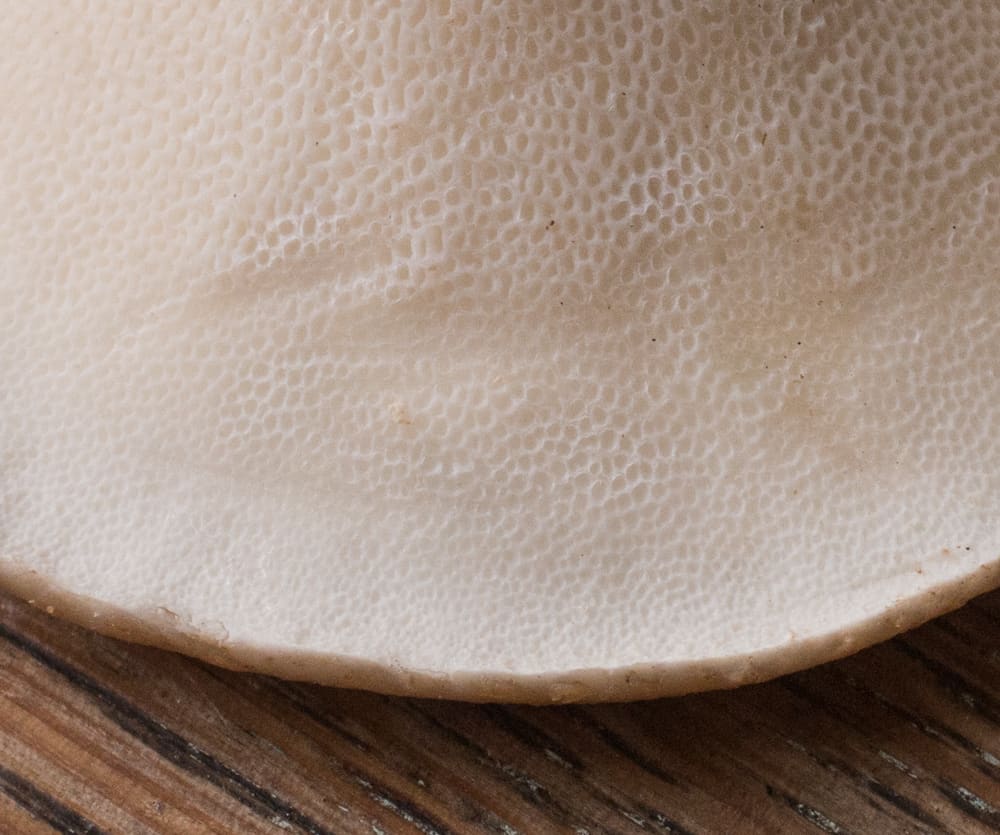
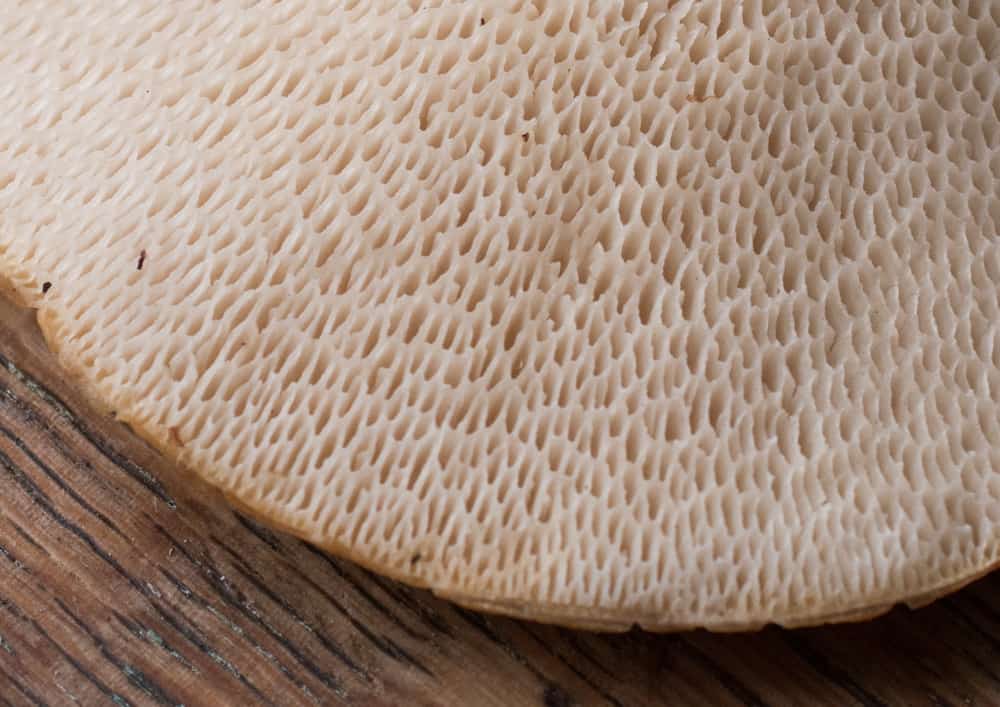
Above: The mushrooms on the left are young and tender, the pores are barely visible and the underside of the cap is almost smooth. Mature mushrooms on the right have visible, open pores and are too tough to eat.
To check if a mushroom is tender I use what I call the scrape test. Take a fingernail or hunting knife and gently scrape the underside of the cap, if the pores are easily scraped off it’s tender. If the pores seem stuck to the cap, toss it or save for mushroom stock.

Above: scraping the pores off with a fingernail will tell you if the mushroom is tender.
Cooking Pheasant Back Mushrooms
How do you cook a dryad saddle? That depends on how old the mushroom is. You wouldn’t eat asparagus when it’s old and woody, but you could make soup with them. The dryad’s saddle is the same.
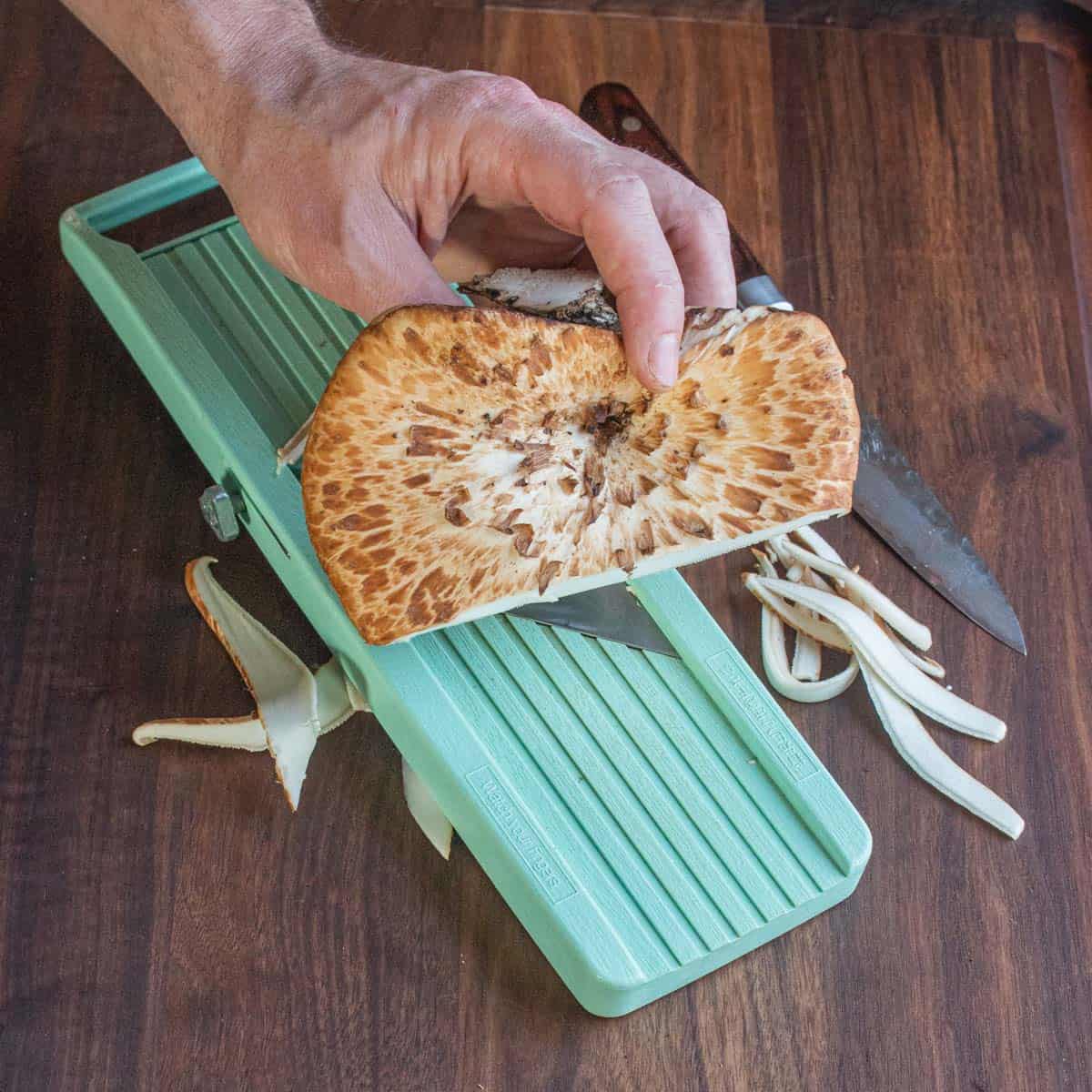 Young dryad saddles are so soft you could slice them without using the mandoline.
Young dryad saddles are so soft you could slice them without using the mandoline.
The first thing I do is cut off the black stem and scrape away the pores on the underside of the cap with a paring knife. You don’t have to remove the pores if the mushrooms are very young. Here’s some tips for preparing pheasant back mushrooms.
- Choose young, small mushrooms.
- Inspect the pores, they should be tight and compressed.
- Scratch the pores with a fingernail-they should come off easily.
- Slice the mushrooms as thin as possible, preferably using a mandoline slicer like the Benriner model. Very young mushrooms can be sliced with a knife.
Below: Hold the mushrooms by the stem and slice. Rotate around the stem to cut the tender edges. Discard the woody stem.
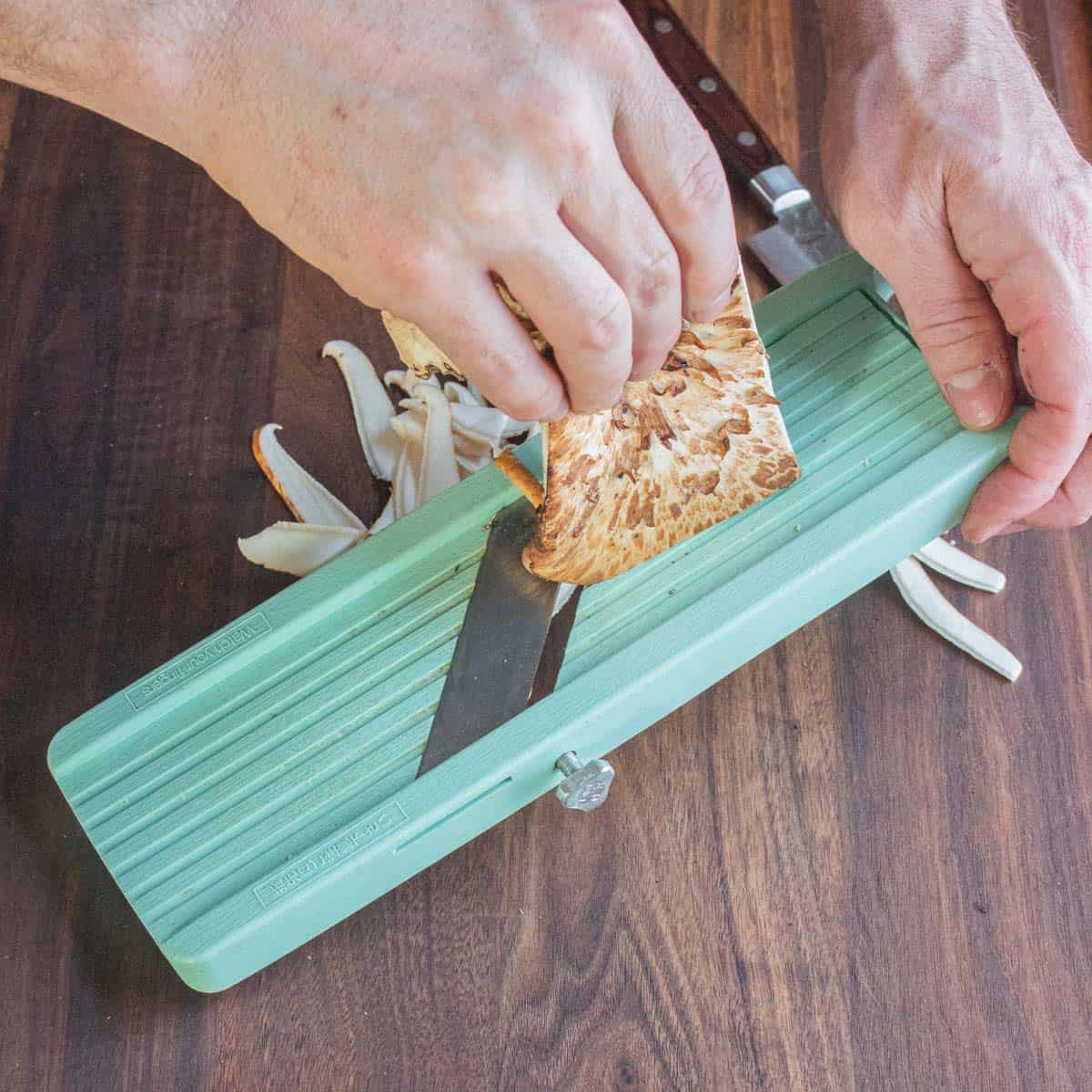

Shaving the dryad saddles makes your work a lot easier-a paring knife isn’t the best.
Above: Mushrooms on the left are edible, but ideally they’ll be mostly flesh like on the right.
After they’re thinly sliced, they can be cooked like any other mushroom. I like to cook thin slices of mushroom in a pan with butter, salt and a splash of wine or stock until the liquid evaporates and the mushrooms start to brown a little.
Pheasant back mushrooms can be eaten raw, but it’s best to sample them in very small amounts. They taste better cooked anyway. Here’s a few other examples.
Below: Add them to soups and stews. Older mushrooms make a good mushroom broth.
Below: Blend in a food processor to make duxelles.

Below: Sauteed dryad saddles with other spring ingredients.
Preserving Pheasant Back Mushrooms
The mushrooms can be dried, but won’t get tender after cooking. Older mushrooms can be dried or powdered for making stocks and soups.

To dry pheasant backs, cut them into thin slices and dehydrate at 145 F (high) until brittle, about 24 hours. Store the dried mushrooms in a mason jar. If you slice them thinly, they make excellent pickles with a nice texture.
You can freeze pheasant back mushrooms by quickly cooking them in a little butter and salt until wilted then freezing in zip loc bag. Vacuum sealed, frozen mushrooms will last the longest-about 6 months.
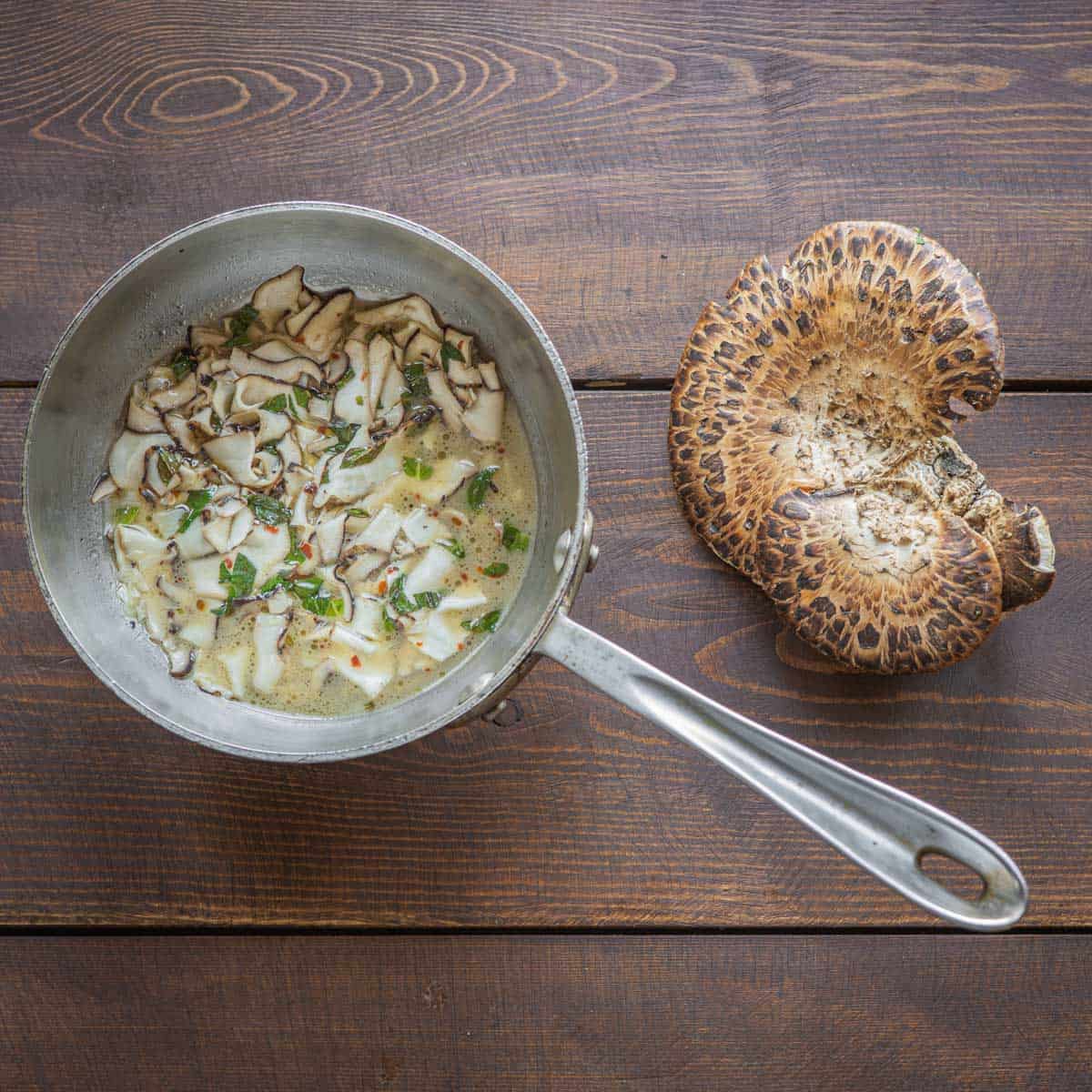
Pheasant Back Mushroom Recipes
These can be cooked like any other mushroom but the recipes below are good places to start.
White Wine Pheasant Backs
Pheasant back mushrooms simmered with garlic, wine and herbs are a reader favorite.

Basic Dryad Saddle / Pheasant Back Broth
A simple broth you can make with tough parts or woody trim. Use it to make ramen or soup.
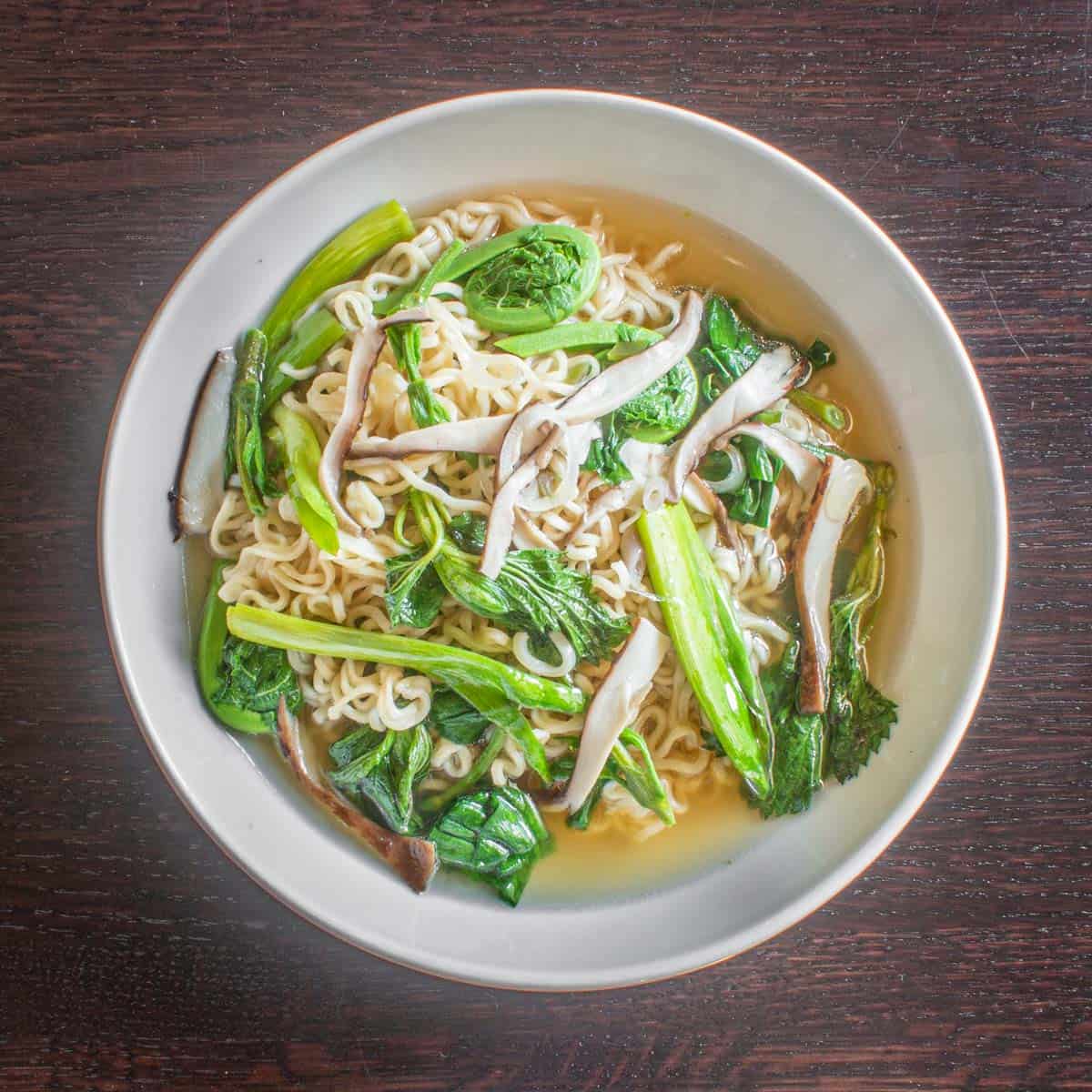
Dryad Saddle Ramen
A delicious bowl of mushroom broth and dryad saddles. Add fresh wild vegetables for a great Spring entree.
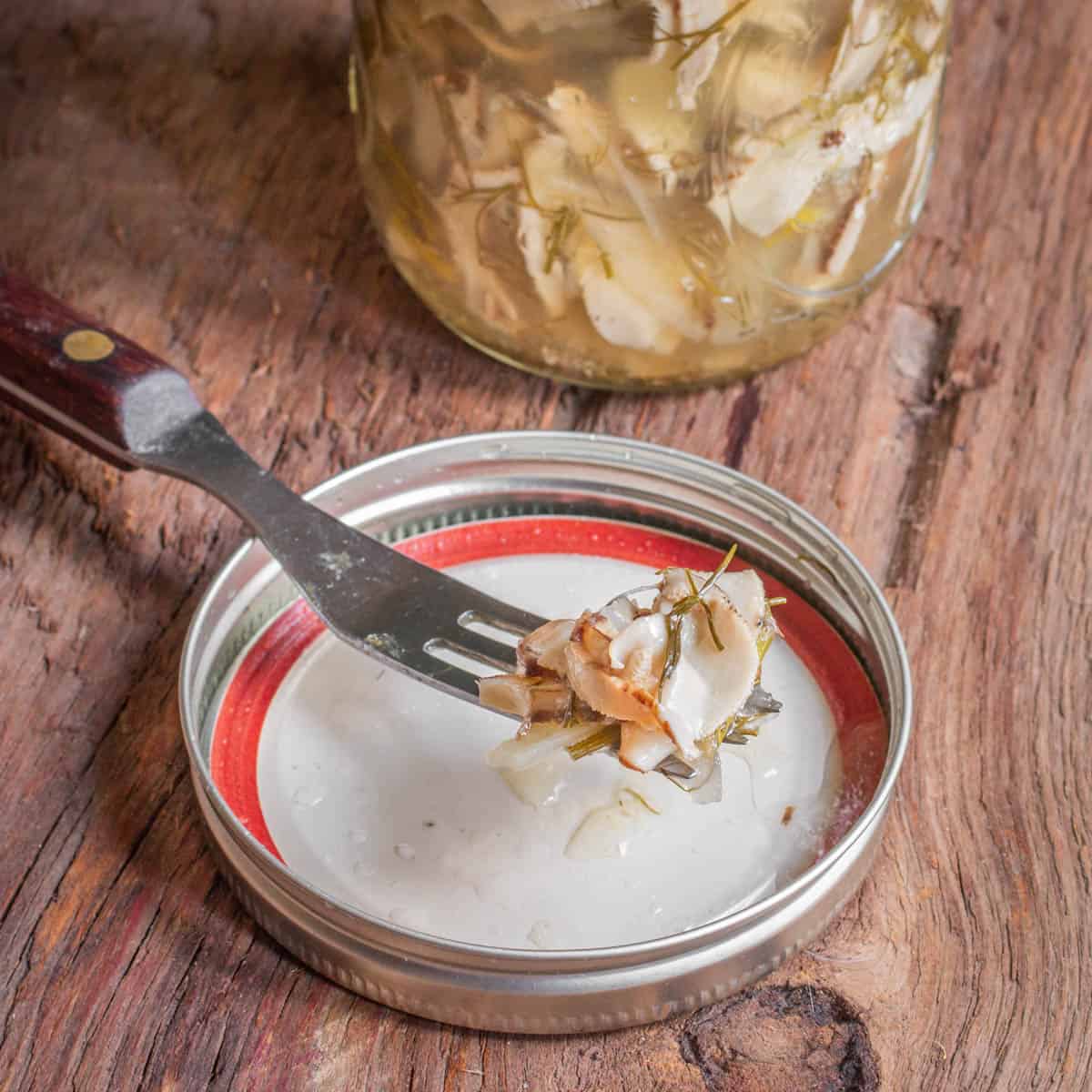
Dryad Saddle Pickles
Tart, spicy mushroom pickles with dill and jalapeno. Add them to soup and sandwiches. You can also use my Wild Mushroom Conserve (Pickled Mushrooms).
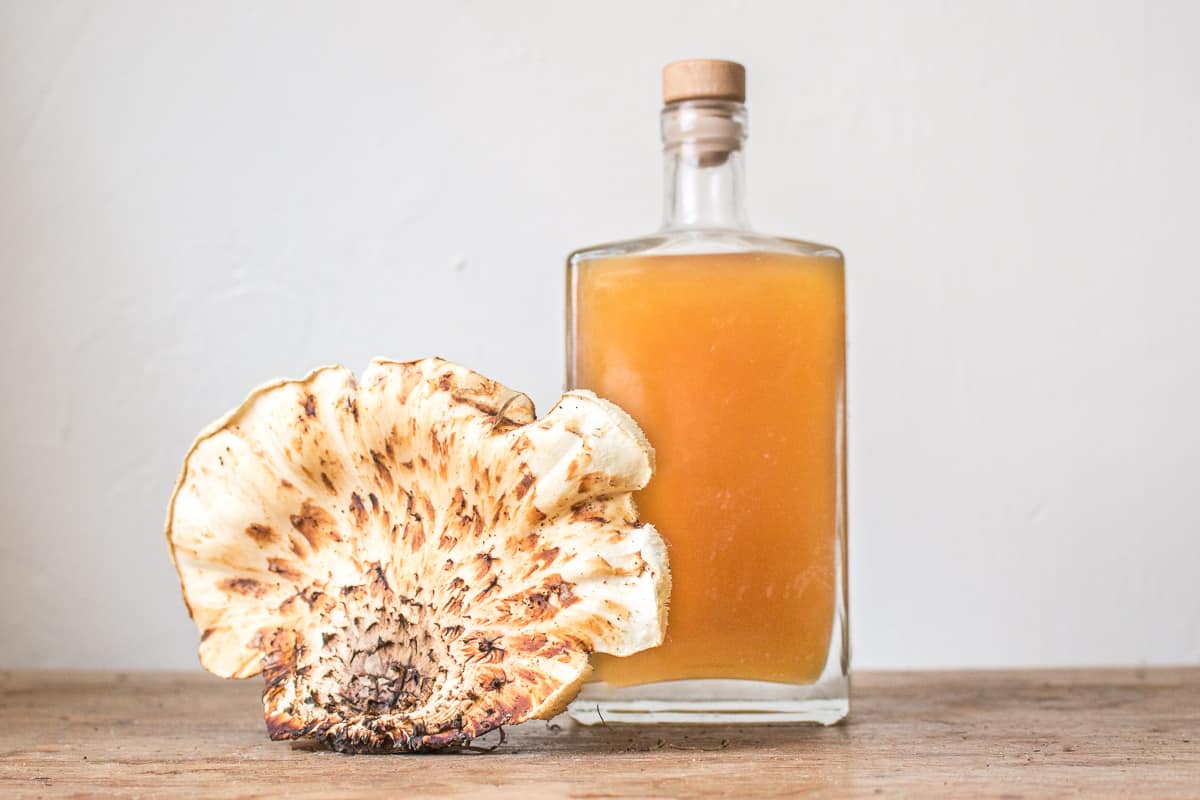
Pheasant Back Fermented Shoyu
An advanced recipe, this is a fermented soy sauce substitute made with koji rice.
More Pheasant Back Recipes
Related Posts
Types of Edible Wild Mushrooms
35 Essential Wild Mushrooms Every Forager Should Know








